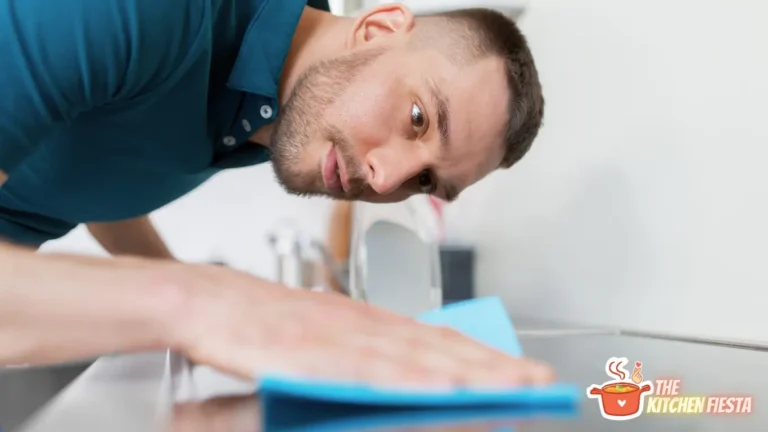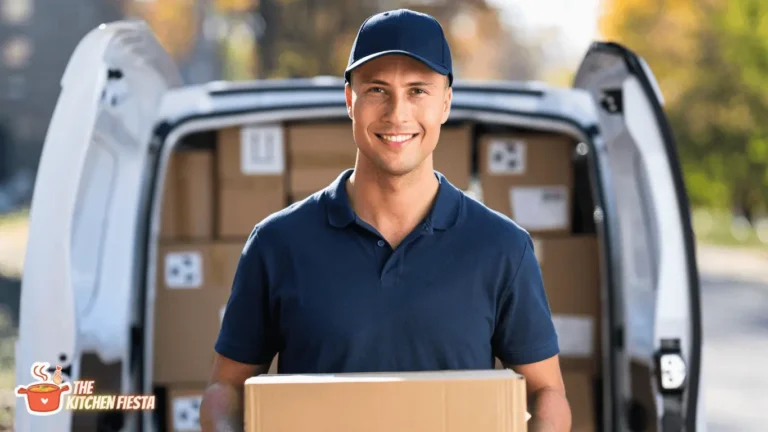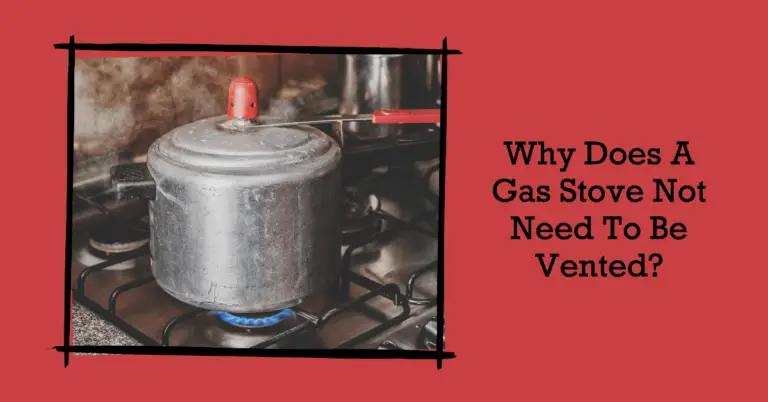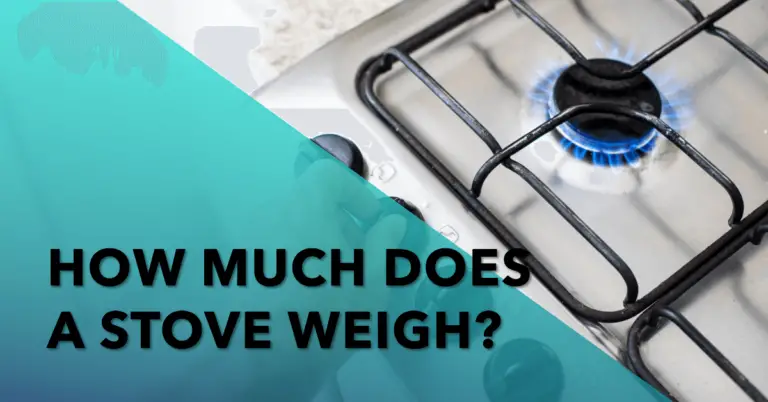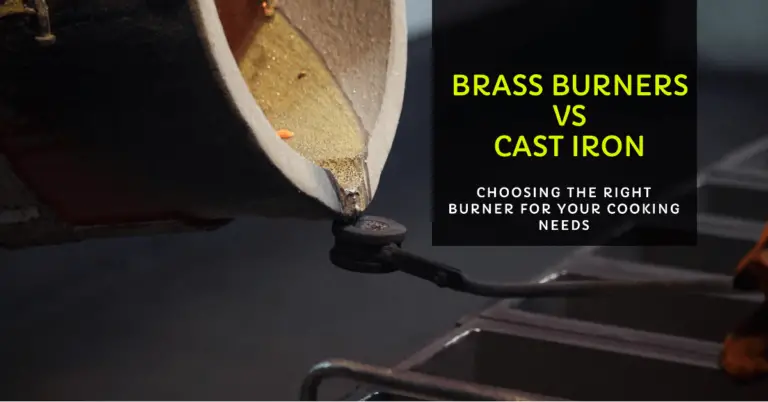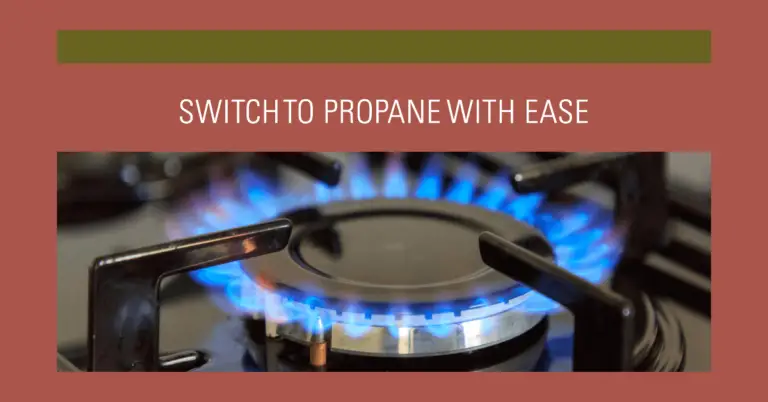Stove Mastery Guide
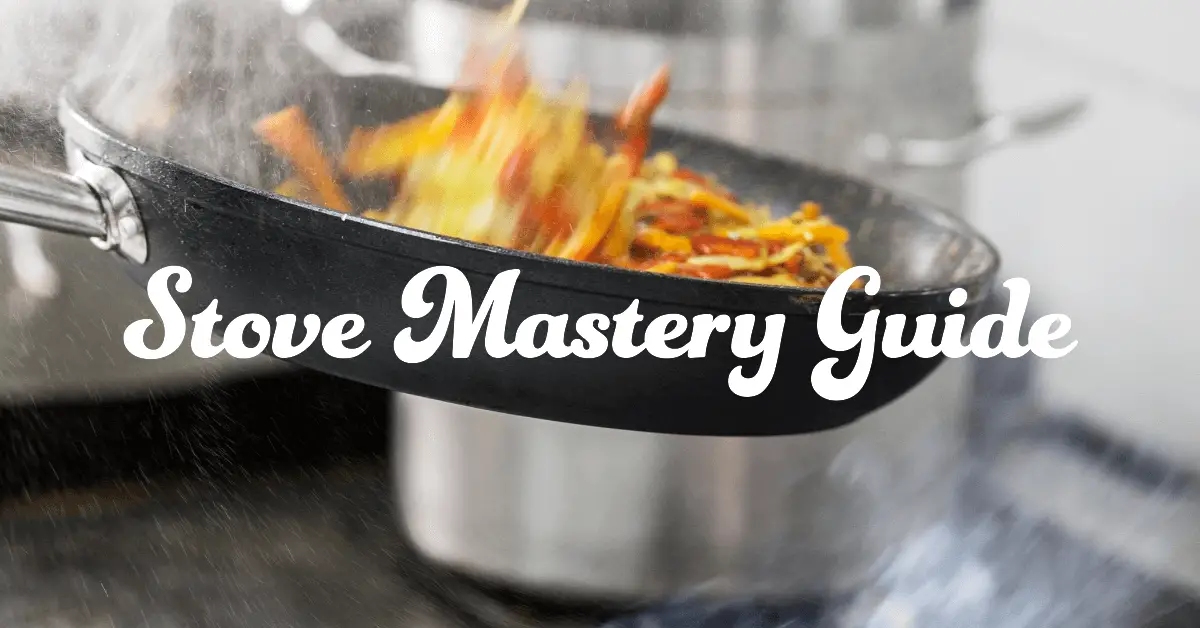
A stove allows you to cook food and is an essential kitchen appliance found in most homes. Stoves have been used throughout human history, evolving from simple campfires and brick ovens to sophisticated modern stove technologies that use gas, electricity, and more for heating and cooking food.
Having the right stove can make cooking more enjoyable and open possibilities for new dishes. This comprehensive guide provides detailed information on the different types of stoves, key features and terminology, how to choose the best stove for your needs, proper installation and operation, cleaning and maintenance tips, safety recommendations, troubleshooting common issues, and more. Whether you are outfitting a new kitchen or want to understand your existing stove better, this guide will help you become a stove expert.
A Brief History of Stoves
Understanding modern stoves helps to know how they developed over time. Here is a quick overview of the history of stoves:
- 1700s – Cast iron stoves with holes for cooking pots were invented. Wood or coal provided the heating source. Ventilation was poor.
- Early 1800s – Gas stoves using city coal gas lines started to appear. This allows better temperature control than solid fuels.
- Mid-late 1800s – Self-contained cast iron stove/oven combinations powered by wood or coal become popular for cooking full meals.
- 1920s – Electric and gas stoves gain widespread residential use. Electric coils and gas burners replace solid fuel sources.
- 1930s – Logic controls and thermostats make gas/electric stoves easier and safer. Enamel coatings prevent rust.
- 1960s – Stacked double oven configurations provide more cooking flexibility. Electronic ignition eliminates the need for pilot lights.
- 1970s – Smoothtop electric ranges with ceramic glass surfaces become an option.
- 1980s – Convection fans for air circulation make electric ovens heat better. Self-cleaning oven cycles are introduced.
- 1990s – Induction cooking, halogen stovetops, and downdraft vents were invented. Stainless steel finishes have gained popularity.
- 2000s – induction stoves, gas cooktops paired with electric ovens, and smart WiFi-enabled stoves that can be remotely controlled become trendy.
Today’s stoves integrate modern technology for convenience and performance while still serving the same essential purpose – controlled heat for cooking.
Types of Stoves
There are several broad categories and fuel types for the main stove varieties found in residential kitchens:
1. Gas Stoves
Gas stoves are fueled by natural gas provided by utility lines or liquid propane (LP) tanks. They provide instant, adjustable flame heat from burners that can be precisely controlled. Most gas stoves have 4-6 separate burners.
Gas stoves heat up and cool down rapidly. The open-flame burners make it easy to observe and control cooking processes like simmering or boiling. Gas stoves are typically cheaper to operate than electric models. However, gas stoves do require proper ventilation and gas line installation.
2. Electric Stoves
Electric stoves use heating coils or induction electromagnets powered by household electricity to generate heat. Electric stoves take slightly longer to heat up but retain heat well for tasks like baking and roasting.
Electric stoves often have smoother glass ceramic tops that are easier to clean than gas stove grates. However, these smooth tops can crack or chip with improper use. Electric stoves may also incorporate additional baking ovens and storage drawers.
3. Dual Fuel Stoves
As the name implies, dual-fuel stoves combine gas burners for the cooktop with an electric oven. This allows you to benefit from the quick responsiveness of gas for stovetop cooking and the even, consistent heat of electricity for baking. Dual fuel stoves provide added flexibility but are more expensive.
4. Induction Stoves
Induction stoves use electromagnetic waves to induce vibrations in ferrous (iron-based) pan materials. This instantly heats the pan rather than using heating elements. Induction stoves allow quicker, more energy-efficient, and precise heating control. But they only work with certain cookware and tend to be more expensive.
5. Hybrid/Smart Stoves
Some modern stoves incorporate multiple cooking technologies, like electric ovens, induction cooktops, gas burners, etc., into one unified smart stove. These stoves can often connect to WiFi and be controlled via smartphone. Hybrid stoves provide the ultimate flexibility and functionality but are pricey.
Stove Features and Configurations
In addition to the heat source, many other features vary between different stove models:
1. Burners/Elements
The number, size, and power of the gas burners or electric coil elements determine how quickly and efficiently the stove can heat cookware for various tasks. More burners or elements allow cooking multiple dishes simultaneously. High-powered burners are ideal for rapid boiling or searing. Low BTU burners are better for simmering or holding food warm.
2. Burner Grates
Gas stove burners have metal grate covers that support pots and pans while allowing flame contact. Continuous grates that cover all burners make it easy to slide pots around the cooktop. Separate grates for each burner provide more control. Grates are typically made of cast iron or stainless steel.
3. Ignition Type
Gas stoves use standing pilot lights, continuous sparking igniters, or electric push-button ignition. Electric ignition buttons are the most convenient and safe to use. Continuous spark igniters will automatically re-light burners if the flame goes out.
4. Oven Configuration
Most stoves have at least one baking oven. Some models have double oven cavities that allow baking at two different temperatures. Oven capacity is measured in cubic feet. Popular sizes range from 4-6 cubic ft. ovens.
5. Broiler Drawer
A separate pull-out broiler drawer under the main oven allows high-heat broiling and searing without raising the oven temperature. This is a useful feature for quick cooking tasks like making bruschetta.
6. Convection Ovens
Convection ovens use a built-in fan to circulate hot air around food for even heating. According to some estimates, convection modes make ovens heat faster and can cook food 25% quicker. Great for serious cooks.
7. Self-Cleaning Oven
A high-heat self-cleaning cycle Saves the chore of scrubbing out the oven interior. Food residue is incinerated to ash that can be easily wiped out after the cycle finishes. This is an optional convenience feature.
8. Cooktop Material
Electric and induction cooktops may have ceramic glass, metal coil burners, or stainless steel as the stovetop cooking surface. Gas stoves typically use angled grates over the burners for optimal flame exposure.
9. Extra Features
Modern stoves include programmable clocks, auto shut-off, warming drawers, temperature probes, adjustable burners, and WiFi smartphone connectivity for remote oven control.
Shopping Considerations for New Stoves
If your old stove needs replacement, carefully evaluate the options to select the best new stove for your cooking needs and kitchen setup.
1. Fuel Type
The first decision is which energy type – gas, electric, or dual fuel. Consider factors like whether you have installed gas lines, how responsive temperature control is with each fuel type, operating costs in your area, and cooking preferences.
2. Burners/Elements
Think about how many pots or pans you typically use at once to determine the ideal burner/element number and power. A configuration with high-powered central burners and lower-power peripherals may be optimal.
3. Oven Capacity
Measure your current oven usage. Oven size over 5 cubic feet only helps if you regularly cook large dishes or batches simultaneously. Otherwise, a standard 4-5 cubic foot oven should suffice.
4. Size/Configuration
Make sure to measure your kitchen space for the stove installation. Allow 30-36 inches of clearance. Also, note cabinet configurations – can the room fit a slide-in stove, or is a freestanding unit needed?
5. Budget
New stoves can range anywhere from $500 up to $10,000 or more, depending on features and build quality. Have realistic expectations for what you can spend. Quality and durability should be prioritized over fringe features.
6. Aesthetics
Stoves come in stainless steel, classic black/white, or more colorful finishes. Choose colors and styling that will look attractive with your existing kitchen decor. But don’t sacrifice functionality just for looks.
Using this criteria will help you realistically evaluate options and find the best stove for how your household cooks.
Proper Stove Installation
The stove must be properly installed in the kitchen to function safely and effectively. Here are key installation tips:
- Review the product manual fully before installing. Follow all instructions provided.
- Ensure proper clearances from walls cabinets for ventilation – 30-36 inches minimum recommended.
- The stove must have its own grounded 120V electrical outlet for electric power.
- Gas supply lines must be installed, with shutoff valves to connect range burners if gas type.
- Anti-tip brackets should securely attach the stove base to the floor or wall. This prevents tipping.
- Level the stove unit using the adjustable feet. A level installation is critical for proper performance.
- After installing, fully test all burners, heating elements, oven, and broiler functions. Verify proper ignition and temperature regulation.
- Run the oven empty on max heat for 1 hour to burn off any manufacturing oils after installation. This “seasons” the oven.
A proper installation by a skilled professional is important for your stove to operate safely and last for years of use. Take steps that compromise safety.
Operating a Stove Safely
While very convenient, stoves can pose risks if not used cautiously:
- Never leave a stove unattended when turned on, especially at high heat settings. Boilovers cause smoke and dangerous grease splatter.
- Keep flammable items like dishtowels, bags, and curtains away from the stove space. Inward-facing handles prevent pot spills.
- Wear short or tight sleeves when cooking. Loose hair should be tied back to avoid catching fire.
- Keep children supervised and away from the stove when cooking to prevent burns.
- Remember that stove surfaces retain heat even after being turned off. Electric stovetops, in particular, stay hot for a while after shutoff.
- Use rear burners with handles turned inwards whenever possible. This reduces the risks of knocking pots over.
- Clean up food or grease spills immediately to prevent slipping and falls.
- To extinguish a grease/oil stove fire, carefully slide a pot lid over the flames. Never throw water on a grease fire.
- Ensure gas burner flames burn blue. Yellow/orange flames indicate incomplete combustion and a risk of carbon monoxide poisoning.
Staying alert and using caution when cooking on a stove will keep you safe. Have a multipurpose fire extinguisher nearby in case of emergency.
Cooking Tips and Techniques
The stove gives you tremendous cooking flexibility if used properly. Here are some general tips:
- Learn your stove’s quirks – where the hot/cool spots are, how quickly it heats up, etc. This allows you to regulate cooking more precisely.
- Choose sturdy cookware with flat, smooth bottoms that make solid contact with burners or heating elements for efficiency.
- Match pan size to the amount of food for even cooking. Overcrowding pans cause uneven cooking. Too much space wastes heat energy.
- Use lids when boiling or simmering liquids to retain heat and moisture.
- Avoid opening the oven frequently when baking. This drops the internal temperature significantly.
- Rotate dishes periodically for even heating. Rearrange oven racks as needed when batch baking.
- Let the stovetop fully cool before cleaning. Use plastic scrapers to remove any hardened spills once cooked gently.
- For gas ovens, allow the burner flame to fully preheat the cavity before cooking. Electric ovens can be switched on just before inserting food.
- Use separate burners for gentle simmering vs. vigorous boiling or searing. This allows you to fine-tune heating precisely for each task.
With experience using your stove, you will learn techniques for cooking foods perfectly.
Cleaning and Maintaining your Stove
Like any appliance, proper cleaning and maintenance is key for good stove performance and lifespan:
- Wipe up food or liquid spills promptly. Accumulated grease is a major fire hazard.
- Use manufacturer-approved cooktop cleaning solutions. Avoid abrasive pads/cleaners that can scratch surfaces.
- Clean the oven regularly. Scrape off baked-on debris gently. Use oven cleaner for heavy deposits.
- Replace old drip pans under burners that are caked with grease residue. This can obstruct heat transfer.
- For gas stoves, clean around the burners routinely to prevent port blockages. Use a pin to clear clogged holes.
- Visually inspect gas lines/valves periodically. Check for leaks that are indicated by a sulfur or rotten egg smell.
- Gently lift electric coil elements to clean below. Avoid bending coils excessively when cleaning.
- Run the self-cleaning cycle or oven cleaner to clean the oven interior deep 2-4 times per year, depending on usage.
- Always turn off the power at the breaker before any repairs or extensive maintenance work.
Proper cleaning and care will keep your stove working like new and add years to its lifespan.
Troubleshooting Common Stove Issues
If your stove exhibits problems, here are some steps to diagnose and fix the most common oven and cooktop issues:
- Burner not igniting – Ensure the gas line shutoff valves are fully open for gas stoves. Try holding the ignition for an extra few seconds. If needed, light with a match. If no gas flows, have gas lines serviced. For electric stoves, check connections and circuit breakers.
- Uneven or low burner heat – Clean any blocked gas ports. Make sure caps sit properly on burners. Replace damaged grates if needed for optimal flame exposure.
- Yellow/orange burner flame – Have a technician adjust the air-gas mixture. This indicates incomplete combustion. Also, clean burners and igniters thoroughly.
- Oven not heating – Verify the temperature setting is accurate. Inspect the heating coils or bake/broil elements, replacing any defective ones. The oven thermostat may need replacement.
- Oven light not working – Screw in a new light bulb if burned out. Verify the light wiring is connected properly.
- Excess smoke from oven – Clean out grease deposits from oven walls fully. Avoid excessive heat when broiling.
- Cracked cooktop glass/grates – Stop using immediately if glass or grates are broken. Handles grates gently when cleaning to prevent damage.
- Ignition clicks but no flame – Check that the gas valve is opening properly. A faulty gas valve requires professional replacement.
- Gas smell/leak – Shut off the gas line immediately. Do not ignite flames. Have a technician locate and repair the leak.
With patience, many basic stove issues can be fixed with basic troubleshooting. But always use caution when diagnosing problems—contact appliance support professionals for complex repairs or gas leaks.
Knowing When to Replace Your Stove
Here are signs that indicate an old stove may need replacement:
- Continuing problems despite troubleshooting and repairs
- Frequent burner/element malfunctions or difficulty regulating temperature
- Heating up or cooling down very slowly
- Cracked or heavily stained cooktop surfaces
- The oven thermostat is no longer accurate
- Excess rust or corrosion on parts
- Noticeable wobbling or instability
- New Sparks/arcing/shocking when in use
- Pervasive gas or burning smells
- Costs exceeding 50% of a new unit
- Availability issues finding replacement parts
- Lack of certain desired features like convection cooking
- Excess energy usage compared to newer models
If your stove exhibits several of these issues, investing in a new one can save money long-term while improving functionality.
Disposing of an Old Stove Safely
To safely get rid of an old stove when replacing it:
- Unplug electric stoves and turn off gas supply lines.
- Remove any grates, racks, or other detachable parts.
- Thoroughly clean the interior of grease and food debris.
- Carefully detach any gas lines if connected directly.
- Cap/plug any open fuel line connections.
- Childproof the oven door latch so it cannot be opened accidentally.
- Contact your local municipality for proper disposal procedures in your area. Many collect large appliances for recycling.
- Some retailers offer a haul-away service when delivering a new stove.
- Never abandon or illegally dump an old stove, posing safety hazards.
Even an outdated stove can be disposed of safely and responsibly with the right precautions.
Conclusion
The stove remains an essential workhorse appliance in any kitchen. With this guide, you should now understand the inner workings of stoves, from broiler drawers to chimney vents. Use this knowledge to pick the perfect stove for your cooking needs, keep it operating safely for years through proper care and maintenance, and learn techniques to create delicious dishes with your stove. Your stove can be a cooking companion for life if selected and cared for wisely.

